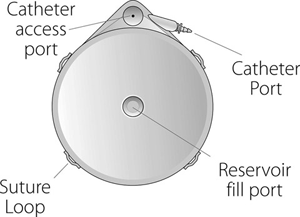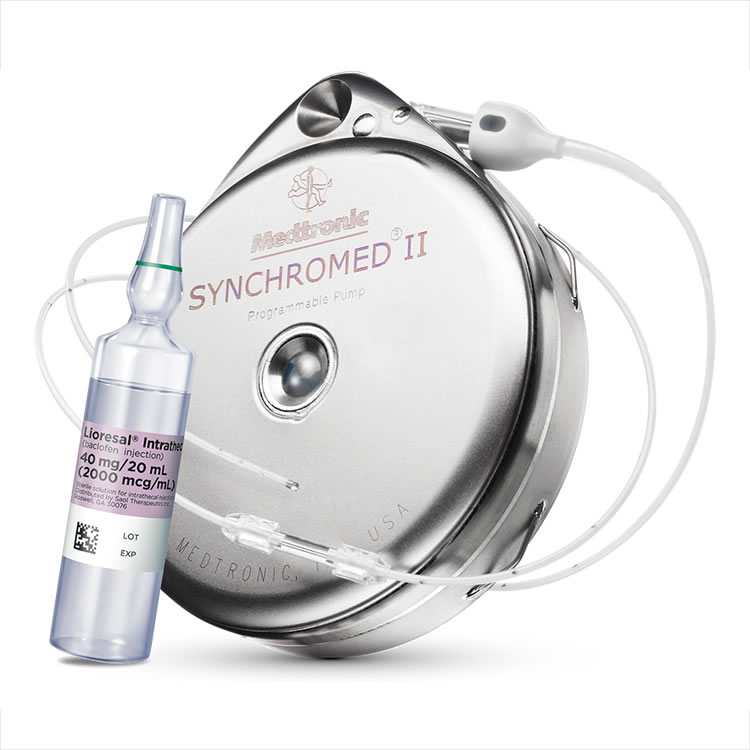One of the most effective ways to treat chronic pain, when all other attempted treatments including surgery has failed, is to put medications directly in the spinal fluid. Intrathecal therapy precisely directs medications to the nerves carrying the pain signals into the spinal cord.
The beauty of this technique is that it is tested with a temporary trial of intrathecal medications, delivered in a minimally invasive way. If significant pain relief is achieved, the system can be implanted as an outpatient. It can also be removed if it is not needed in the future.
- The medications are not being delivered by the bloodstream throughout the body.
- Some of the medications used are only available for intrathecal use and cannot be delivered by any other route of administration.
- It is possible that no opioid (narcotic) medication needs to be used for successful pain relief.
Often combinations of medications with different mechanisms of action are used to successfully treat intractable chronic pain. None of the medications are systemic (throughout the body) since they are placed directly into the spinal fluid that bathes the spinal cord and the nerves transmitting the pain signals toward the brain. (Use of some of these medications intrathecally represents an off-label use, but has been used this way for years as best-practice).
Courtesy of Medtronic
Courtesy of Medtronic


This is the Synchromed II programmable intrathecal pump by Medtronic. It holds either 20 mL or 40 mL of medications. This can provide pain relief for up to six months between refills but this depends on each individual patient’s response.

The Medtronic delivery system can also be used to treat intractable spasm due to neurologic conditions including spinal cord injury and cerebral palsy. Intrathecal Baclofen (Lioresal) is very effective and can also be mixed with other medications to treat pain in addition to spasticity.
Patients who are already implanted and have relocated to our southern NJ area are welcome to contact our office for an evaluation if they are seeking a transfer of care.
Patients already implanted with Flowonix Prometra Intrathecal delivery systems can also contact us for an evaluation. We are very experienced with this system as well.